The Ultimate Residential Landscape Design Inspiration Guide for Birmingham, MI Homeowners
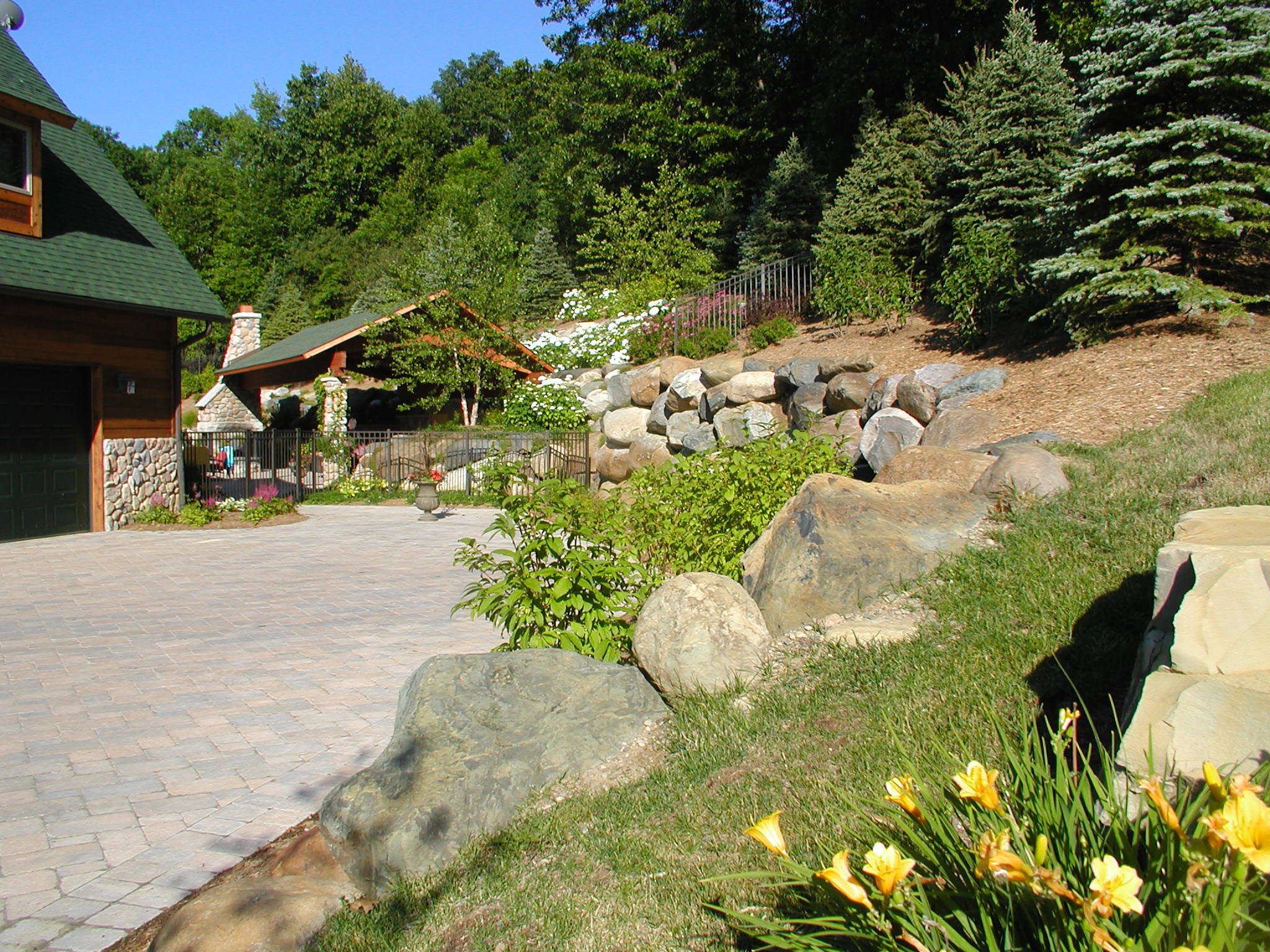
Why Thoughtful Residential Landscape Design Matters in Birmingham
Take a quick evening drive through Quarton Lake Estates or the Rail District and you’ll notice something beyond beautiful architecture: the most memorable homes are framed by eye-catching landscapes that feel as curated as an art collection. In Birmingham, residential landscape design is a lifestyle choice, not a luxury add-on.
An expertly crafted yard can increase resale value by 15–20 percent, but the bigger payoff is day-to-day enjoyment—summer dinners beneath a pergola, the scent of native lilacs drifting through open windows, or the simple pride of arriving home to an elegant front walk lined with lighting. Unfortunately, Michigan’s climate is no friend to cookie-cutter plantings. Clay soils stay wet in spring, dry out like concrete in August, and heave patios during freeze–thaw cycles. Without a strategic plan, money disappears into drainage fixes, re-grading, and endless re-planting. A smart design anticipates those challenges: it diverts spring melt before it floods basements, relies on tough plant communities that shrug off late April frosts, and incorporates hardscape materials that remain true through January thaws.
Let’s Get Started
Throughout this guide you’ll find practical landscape design inspiration rooted in Southeast Michigan’s soils, seasons, and sophisticated aesthetic. We’ll cover emerging trends, climate-ready backyard landscaping ideas, strategies for weaving native plants into high-end schemes, and outdoor living upgrades that extend your usable square footage well beyond the back door. Finally, we’ll show how a partnership with Landscape Gardens—a local design-build specialist—can streamline the journey from Pinterest dream to finished showpiece.
1. Latest Trends in Residential Landscape Design (2025 Edition)
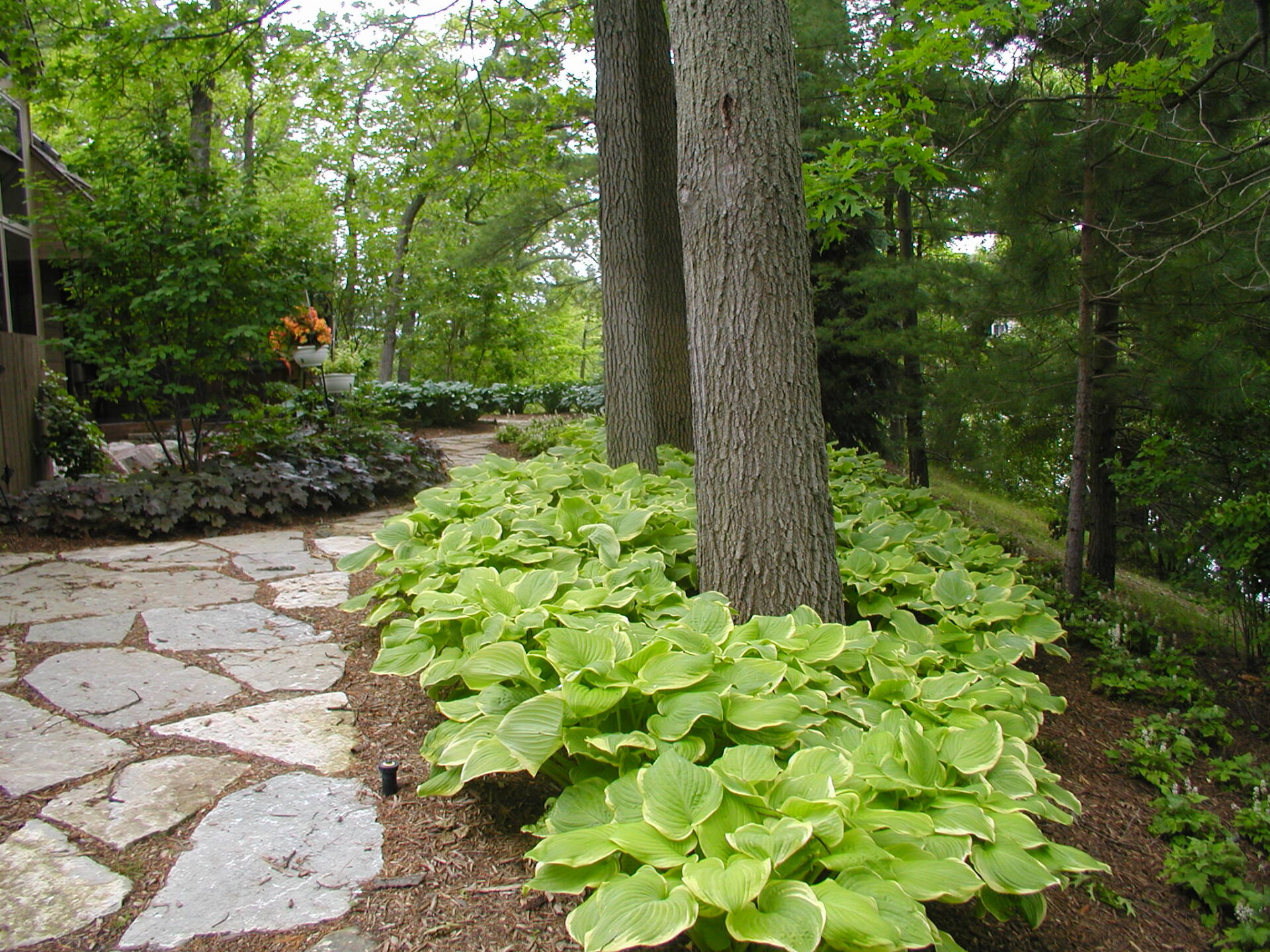
Trends shouldn’t dictate every choice, yet understanding what’s hot (and why) helps you craft a landscape that feels fresh instead of dated. Here are six movements currently shaping metro-Detroit landscape design ideas—all adaptable for standard lots and estate properties alike.
1.1 Multi-Zone Outdoor “Great Rooms”
Remember when a deck and a grill counted as outdoor living? Today’s homeowners want distinct destinations: a chef-worthy kitchen with built-in refrigeration, a shaded dining space beneath motorized louvers, a sunken lounge focused on a sleek linear gas fire table, and maybe even a secluded daybed nook hidden behind maiden-grass plumes. The trick is flow. Professional designers arrange zones like an interior floor plan—transition paths at least four feet wide, low seat walls acting as subtle dividers, and repeating materials (e.g., bluestone caps throughout) to visually connect each area.
1.2 Climate-Resilient Plant Palettes
The past five years brought record drought summers followed by water-logged springs; designers are responding by building durable plant “communities” instead of fussy one-offs. Ornamental grasses such as ‘Northwind’ switchgrass, shrubby St. John’s-wort, and disease-resistant hydrangeas like ‘Limelight Prime’ now headline luxury beds. Their secret: deep roots, low water requirements, and multi-season appeal. Accent them with long-blooming natives—coneflower, bee balm, and ‘Millennium’ allium—to ensure color from May to October with minimal irrigation.
1.3 Permeable Pavers – An Eco-Conscious Approach
Permeable pavers migrated from municipal parking lots into high-end driveways on Arlington Street. Their stone-filled joints absorb stormwater, eliminating icy puddles and satisfying Birmingham’s updated runoff codes. Porcelain plank pavers that mimic hardwood, thermally modified ash decking, and reclaimed barn-stone walls prove sustainability can look impeccably refined. Across the affluent enclave of Arlington Street, a transformative shift in residential landscaping has taken root, with permeable pavers now adorning the driveways of distinguished homes. This transition, initially observed in expansive municipal parking areas, demonstrates a sophisticated approach to stormwater management. The carefully designed, stone-filled joints of these pavers act as efficient conduits, allowing rainwater to seep into the ground, effectively eliminating the hazards of icy puddles during colder months. More significantly, this innovative feature satisfies the recently revised and more stringent runoff codes mandated by the City of Birmingham, showcasing a proactive commitment to environmental regulation.
Beyond mere functionality, these pavers represent an aesthetic statement. The homeowners of Arlington Street have embraced cutting-edge materials to elevate the appearance of their properties. Porcelain plank pavers, ingeniously crafted to replicate the warm, inviting texture of hardwood floors, have been incorporated, providing a unique blend of durability and elegance. Additionally, thermally modified ash decking has been utilized, offering an environmentally responsible yet stylish outdoor surface. Reclaimed barn-stone walls, with their rustic charm and storied past, further accentuate the trend towards sustainable luxury. This fusion of eco-conscious materials with impeccable design demonstrates that a commitment to sustainability need not compromise on refinement or aesthetic appeal, resulting in outdoor spaces that are both environmentally responsible and strikingly beautiful.
1.4 Discreet Landscape Technology for Residential Landscape Design
Smart irrigation controllers adjust run times to yesterday’s rain; Wi-Fi-enabled LEDs change color for game day; and robotic mowers keep lawns manicured without Saturday labor. Forward-thinking companies like Landscape Gardens install empty conduit trenches during construction so homeowners can adopt new tech later without disturbing mature beds.
1.5 Layered Night-Lighting
Instead of uniform floods, designers create drama through layers: warm bollards along walks for safety, downlights hidden in oak limbs to mimic moonlight, narrow uplights accenting stone columns, and twinkling café strings overhead for ambience. The right combination turns an ordinary Tuesday into a private resort experience. Imagine stepping outside on a seemingly ordinary evening, yet feeling as though you’ve been transported to a secluded, luxurious resort. This isn’t a trick of the mind, but rather the result of meticulously crafted outdoor lighting design. Gone are the days of harsh, uniform floodlights that obliterate nuance and atmosphere. Today’s visionary designers employ a sophisticated approach, creating a multi-layered tapestry of illumination that caters to various needs and desires, all while crafting an unforgettable aesthetic experience.
1.5.1 Beginning considerations
First and foremost, safety is paramount. Discreet, warm-toned bollard lights guide footsteps along walkways, ensuring secure passage and preventing missteps in the darkness. Their gentle glow casts a welcoming aura, subtly illuminating the path without overwhelming the surroundings. This practical necessity also adds a touch of warmth and intimacy to the environment.
Moving upwards, hidden downlights strategically placed within the branches of mature oak trees begin to emerge. These aren’t your average porch lights. These are carefully positioned to mimic the soft, diffused glow of moonlight filtering through leaves. The effect is magical, creating a sense of natural wonder and enchantment. Function is key here, as these lights provide sufficient illumination without overpowering the scene, allowing for safe navigation while maintaining a romantic and serene atmosphere.
1.5.2 Finishing TOuches
Next, precisely aimed, narrow uplights bring architectural features such as stone columns brought to life. These lights draw the eye upwards, highlighting textures and contours, transforming ordinary structural elements into dramatic focal points. This layer of lighting becomes art in itself, celebrating the beauty and craftsmanship of the built environment and adding a sense of grandeur and sophistication.
Finally, suspended overhead, delicate strings of twinkling café lights complete the scene. These lights are more than just decoration; they create a palpable sense of ambiance, imbuing the space with a festive and celebratory air. Their gentle sparkle evokes images of romantic evenings, lively gatherings, and carefree moments. The combination of all these elements creates a sensory experience that transcends basic illumination. This thoughtful layering, a delicate dance of light and shadow, transforms an otherwise mundane evening into an extraordinary one. The right combination of carefully considered lighting elements effectively crafts a private resort experience in your backyard.
1.6 Upscale Sustainability
Eco-friendly used to signal rustic—think rain barrels and rough cedar signs. Now it looks polished: sculptural corten-steel planters filled with pollinator mixes, rain gardens framed by clipped boxwood, or a native meadow beyond a chic granite seat wall. Green choices blend seamlessly with Birmingham’s sophisticated vibe.
2. Inspiring Backyard Landscaping Ideas for the Michigan Climate
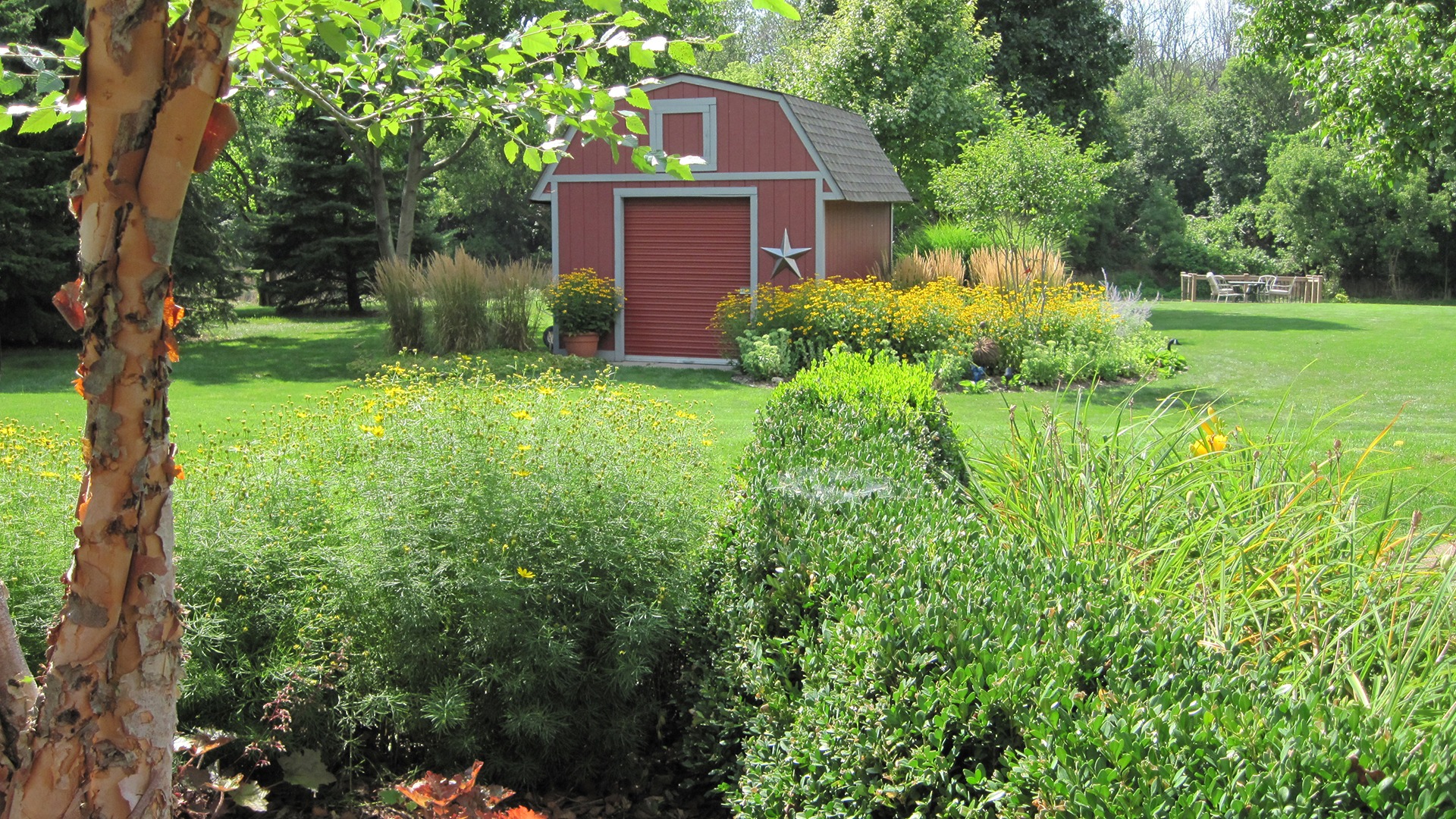
Trends provide a spark, but translating them into lasting landscaping ideas for homes requires climate savvy. Below are strategies tailored to Michigan’s four-season roller coaster and diverse neighborhood lot sizes.
2.1 Four-Season Planting Blueprint for Residential Landscape Design
Spring (Late March–May)
Early drama is essential in a region starved for color after winter. Plant drifts of hellebores near the front walk—they push up blooms even while snow lingers. Understory trees such as serviceberry or redbud deliver blossoms before your maples leaf out. Interplant with native ephemerals like trillium or Virginia bluebells for a woodland feel.
Summer (June–August)
Think stamina. Coneflower cultivars (‘Sombrero Hot Coral’), catmint, and drop-ins of annual lantana fuel pollinators and laugh at heat. Ornamental grasses provide movement, while tropical-looking cannas add resort flair around pools.
Autumn (September–October)
Capitalize on Michigan’s legendary foliage. Sugar maples ignite in orange and scarlet; switchgrass ‘Shenandoah’ matures to burgundy. Hydrangea panicles dry into parchment hues—leave them standing for texture. Late-blooming asters and sedum carry nectar into October, feeding migrating monarchs.
Winter (November–February)
Structure rules: clusters of Techny arborvitae, red-twig dogwood stems, and river birch with papery bark stand out after snowfall. Dried hydrangea heads catch hoarfrost, and strategic uplighting turns bare trees into living sculptures.
2.2 Microclimate Mastery in Residential Landscape Design
Even a quarter-acre lot hosts multiple habitats: sun-baked corners, wind tunnels between houses, damp shade along north foundations. Map these zones, then match plants accordingly. A brick south wall radiates heat—ideal for espaliered pear or hardy fig. A low rear swale? Convert it to a pollinator-loaded rain garden that stores runoff before it reaches Rouge River. Landscape Gardens includes microclimate audits in every residential landscape design package so clients avoid costly mismatches.
2.3 Space-Stretching Tricks for Compact Yards
Many Birmingham homes sit on cozy lots. You can create breathing room through:
- Diagonal paver layouts—running joints at 45° draws eyes outward, making patios feel larger.
- Vertical accents—slender columnar hornbeam or ‘Sky Pencil’ holly deliver height without width.
- Built-in seating—stone seat walls around a fire pit eliminate bulky furniture and hide drainage pipes.
- Mirrors on fences—appropriately weatherproofed glass doubles the sense of depth in tight courtyards.
2.4 Water Features That Over-Winter With Ease
Traditional koi ponds demand heaters, netting, and deep excavation. Instead, consider a recirculating basalt column fountain or a pondless cascade. Pumps slip out in November, leaving sculptural rock that ices into winter artwork. Low maintenance, high sensory reward.
2.5 Kid-Friendly Meets Sophisticated
Parents crave grown-up style without sacrificing play. A synthetic-turf putting green doubles as a cartwheel lawn. Low granite seat walls become impromptu stages for chalk doodles. Custom cedar climbing frames are stained to match the pergola. Everyone’s happy.
2.6 Pocket Wildlife Corridors
Even urban blocks can support biodiversity. Layer tall oaks, mid-story dogwood, and ground-covering Pennsylvania sedge to create mini-habitats. Leave a discreet brush pile behind the garage; it shelters toads that keep slugs away from hostas. Small choices invite birds and butterflies, turning your yard into a living nature channel.
3. Integrating Native Plants for High-End Sustainability
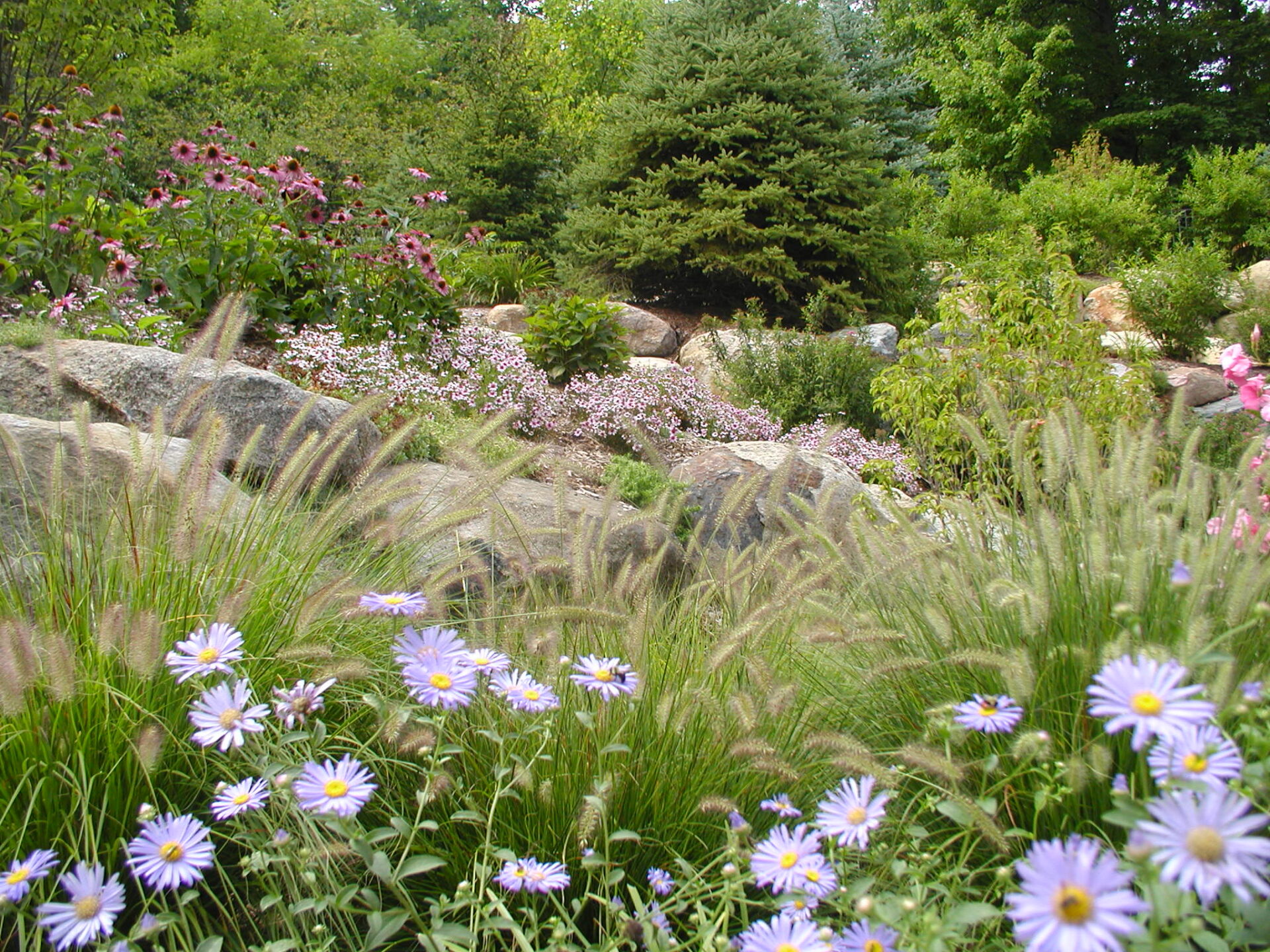
Native species once carried a “weedy” reputation. Today, designers blend them into refined gardens for beauty, resilience, and ecological lift—hallmarks of forward-looking landscape design ideas.
3.1 Keystone Choices With Outsized Impact
A single white oak supports over 500 species of Lepidoptera (the butterflies and moths birds feed on). Swap one ornamental pear for swamp white oak and you’ve multiplied ecosystem value dramatically. Serviceberry trees offer trifecta benefits: spring bloom, edible summer berries, and blazing fall color.
3.2 Melding Formal and Naturalistic
Native doesn’t mean unkempt. A clipped hedge of ‘Green Mountain’ boxwood frames a looser meadow matrix of little bluestem, prairie dropseed, and blazing star. The crisp outline signals intention; the interior dances with bees and color. It’s polish and pollinators.
3.3 Soil Preparation—The Hidden Luxury
Clay is Birmingham’s reality. Crews from Landscape Gardens amend beds with compost, expanded shale, and aged pine fines to boost porosity before any plant meets soil. The result: deeper roots, less watering, and plants that resist frost heave.
3.4 Water Wisely, Then Let Them Run
Native plugs still require irrigation their first season. Drip lines, set to infrequent deep soakings, encourage roots to chase moisture downward. By year two, rainfall suffices barring severe drought, trimming both utility bills and environmental footprint.
3.5 Signature Native Pairings
| Setting | Planting Recipe | Designer Tip |
| Sunny Pollinator Strip | Butterfly weed, ‘Northwind’ switchgrass, aromatic aster, showy goldenrod | Stagger heights for a rolling wave effect visible from the kitchen window. |
| Woodland Edge | Pagoda dogwood under-planted with Solomon’s seal, wild geranium, Pennsylvania sedge | Add a stone bench—spring ephemerals shine here during April walks. |
| Rain Garden | Blue flag iris, cardinal flower, monkey flower, Joe-Pye weed | Place near a downspout to intercept roof runoff and relieve basement pressure. |
High-end sustainability means aligning beauty, maintenance ease, and habitat gains—native plants are the low-risk, high-reward path.
4. Outdoor Living & Lighting Ideas That Extend Your Home

Outdoor living spaces effectively add square footage—no city paperwork needed. A well-lit, climate-ready backyard can serve as breakfast nook, afternoon office, and after-dinner lounge for eight months each year.
4.1 Crafting the Perfect Patio Sequence for Your Residential Landscape Design
- Arrival Walkway – Widen to 5 feet so two people pass comfortably. Use contrasting stone insets to slow water toward a trench drain.
- Cooking Hub – Position the grill so prevailing westerlies carry smoke away from guests. Countertops in honed granite hide refrigeration below.
- Dining Pavilion – Motorized pergola louvers close at the first drop of rain and support infrared heaters. Integrate low-profile ceiling fans to thwart mosquitoes.
- Conversation Court – Step down two risers to create an intimate sunken lounge. Surround a gas fire table with deep seating and Sunbrella cushions.
- Quiet Retreat – Behind tall maiden grass, tuck a hammock platform or daybed for Sunday naps.
4.2 Luxury Materials With Midwest Durability
| Element | Premium Option | Why It Excels |
| Decking | Thermally modified ash | Rich color like Ipe, but sustainably grown in the U.S.; resists rot and insects. |
| Patio | Large-format porcelain pavers | Fade-proof, stain-proof, and emulate marble or weathered wood. |
| Seat Walls | Full-color bluestone caps on veneer fieldstone | Comfortable sitting temperature and timeless style. |
4.3 Lighting Layers for Atmosphere and Safety
- Safety Layer – Flush step lights and low bollards guide feet, set at 2700 K for inviting warmth.
- Task Layer – Down-lights in pergola rafters illuminate the grill and dining table—no flashlights required.
- Accent Layer – Narrow 10-degree spots uplight a Japanese maple, while wall-wash fixtures graze stone textures.
- Sparkle Layer – Café strings overhead or fiber-optic “stars” embedded in pavers turn every night into a celebration.
Smart transformers allow app control, dimming, and holiday color programming—turn your house façade red and green in December, or Honolulu Blue for Lions playoffs.
4.4 Invisible Audio
Small satellite speakers hide behind shrubs; a subterranean subwoofer buries bass in the mulch. Zoning lets you stream kids’ playlists by the trampoline while smooth jazz drifts over the cocktail bar.
4.5 Heat & Wind Management
Radiant heaters mounted to pergolas, portable propane towers, and masonry fire features stretch patio season into Thanksgiving. Pair heat with wind breaks—evergreen hedges or clear vinyl screens that disappear when rolled up.
4.6 Pool & Spa Enhancements
Space-saving cocktail pools (10 × 16 feet) or lap lanes offer resort vibes on modest lots. Automatic covers improve safety and retain heat. Raised spas spill into pools, masking road noise with water music.
4.7 Furniture Built to Last
Powder-coated aluminum frames resist rust; quick-dry foam cushions shrug off rain. Choose a neutral base (taupe, charcoal) and refresh style via pillows and rugs every few years instead of replacing entire sets.
5. Budgeting and Phasing – Turning Vision Into Reality

A 100-percent-installed master plan is ideal, but phased construction keeps momentum without overspending.
Phase 1 – Infrastructure First
Regrade for drainage, trench electrical sleeves, stub gas lines, and pour footings. Trees and evergreen structures go in now so they mature while the finishes wait.
Phase 2 – Hardscape & Carpentry
Install patios, walks, seat walls, decks, and any pergola or pavilion. Your yard becomes usable even if planting beds are still blank.
Phase 3 – Softscape & Lighting
Add perennials, shrubs, mulch, and low-voltage lighting. Accent lights instantly make young beds feel established.
Financing Smartly
Landscape Gardens partners with regional lenders offering low-interest home-improvement loans with no prepayment penalty. Spreading investment over six years can translate a $120,000 multi-zone project into a payment comparable to a car lease—while instantly boosting home enjoyment and value.
ROI Perspective
Upscale outdoor living projects recoup about 70 percent at resale, according to national cost-vs-value reports, and deliver priceless daily benefits: family meals outside, stress-reducing garden walks, and an entertainment venue steps from your sofa.
6. Local Birmingham Considerations for Residential Landscape Design

Tree Preservation Ordinances
Removing any tree over an eight-inch diameter requires a city permit. Designers position patios beyond critical root zones and specify permeable paving near trunks so heritage oaks remain healthy.
Storm-Water Codes
Exceed 200 square feet of new impervious surface and you may need an on-site detention solution. Rain gardens, permeable paver driveways, or underground chambers usually meet requirements. Landscape Gardens handles engineer-stamped plans.
Architectural Harmony
A Tudor on Puritan Avenue wants limestone banding echoed in seat-wall caps; a mid-century modern near Seaholm High might call for board-form concrete. Successful landscapes borrow cues from the house, making home and garden read as one cohesive statement.
Ready to Transform Your Yard? Partner With Landscape Gardens
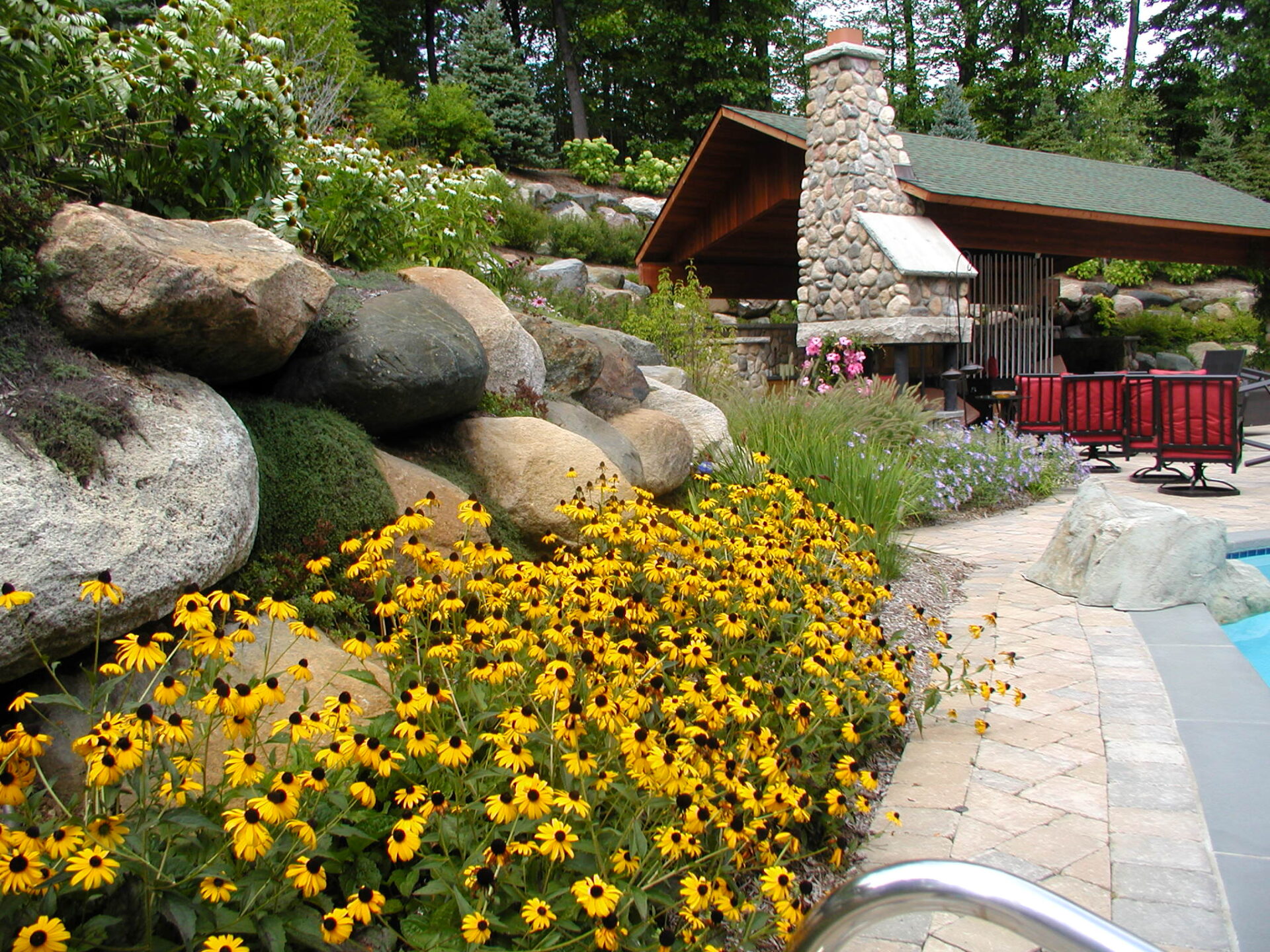
You now have a playbook packed with four-season plant palettes, climate-proof backyard landscaping ideas, tech-savvy lighting schemes, and native-plant insights—all tailored to Birmingham’s environment and lifestyle. Turning inspiration into a polished, enduring yard demands expertise in horticulture, construction, permitting, and project management. That’s where Landscape Gardens shines.
Why Homeowners Trust Landscape Gardens
- Design–Build Simplicity – In-house landscape architects translate dreams into 3-D concept renderings, handle city approvals, and oversee the same crew that installs every stone, shrub, and LED.
- Craftsmanship & Materials – From hand-chiseled retaining walls to porcelain plank patios, quality drives every detail.
- Native & Sustainable Know-How – Rain gardens, permeable driveways, and pollinator meadows that look refined, not rustic.
- Technology Integration – Smart irrigation, low-voltage lighting, and hidden sound woven in seamlessly.
- White-Glove Maintenance – Ongoing garden care, lawn programs, and seasonal container design keep investments thriving.
Whether you envision a grand entertaining terrace overlooking Quarton Lake or a jewel-box sanctuary behind a Lincoln Street bungalow, the Landscape Gardens team listens first, then crafts a plan aligned with your taste, timetable, and budget.
Ready for a landscape that welcomes you home in every season?
Contact us today to request a quote. Your personalized residential landscape design journey begins with a friendly conversation—and ends with the outdoor haven you’ve always imagined.
Tags:
